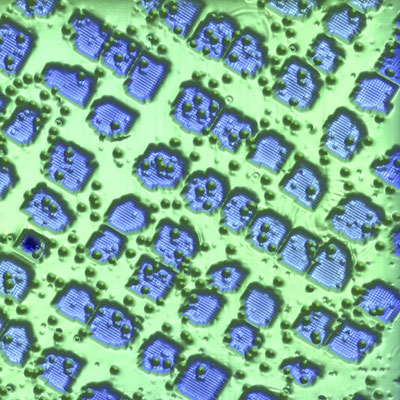
IBM researchers can now look into what’s happening in individual atoms in close to real time, according to a paper published Friday in Science.

“We’re interested in what happens at the very end of semiconductor and the IT industries,” Andreas Heinrich, one of the IBM researchers involved in the project, told TechNewsWorld. “At that point, you’re looking at single atoms, and we wanted to explore what happens at that scale.”
To do that, the researchers used IBM’s Scanning Tunneling Microscope (STM) to take 100,000 snapshots of an atom within less than one second.
“When you scale objects down to the scale of atoms, the physics tends to speed up,” Sebastian Loth, another IBM researcher involved in the project, told TechNewsWorld. “This means you need to have a tool that can keep up with the increase in speed.”
The new techniques could be used to create ultra-high density storage devices or to study magnetic and vibrational information and light.
IBM researchers in Zurich have previously used the STM to create models of the world and of the Matterhorn measuring just over a dozen nanometers.
How to Peek Into an Atom
The STM, which was invented at IBM’s research labs in Zurich, basically consists of a nanoscale tip that’s 500 nanometers (NM) long and only a few nanometers wide attached to a cantilever that scans the surface of material with an accuracy of 1 NM.
It’s previously been used to take still photographs, but IBM researchers have figured out a way to speed up the shots to provide near-real time images.
“We set up the magnetic structure in the same way every time and we take a short snapshot 100,000 times and then we have enough information,” Loth said. “These processes happen very fast — the entire measurement takes less than a second.”
The images are then collated by a computer.
The speed of the STM needle is controlled by fluctuations in signal strength, and there are no physical moving parts involved, Heinrich said.
The Sensitive Type
The small scale of the measurements means signal strength is minuscule.
“The average signal we get per measurement is on the order of 100 electrons,” Loth said. “You don’t even express it in terms of volts or amperes any more.”
This sensitivity leads the IBM researchers to believe that they can apply their measurements to “a lot of other fields,” Loth remarked. “You can apply this tool to magnetism or novel ways of computing that falls under the category of quantum computing,” he explained.
Implications for Storage
One of the possible uses for this technology is to make storage more efficient.
“We want to answer questions that are relevant to technology,” Heinrich added.
“Given that you are increasing storage density massively, you’ll be able to both store and recover information at higher rates on any moving media while keeping the movement of the media at acceptably high speeds,” Rob Enderle, principal analyst at the Enderle Group, told TechNewsWorld.
However, more work needs to be done before any kind of storage device using this technology can be developed, Heinrich pointed out.
Uses in Quantum Computing
Quantum computers make direct use of quantum mechanical phenomena, such as superposition and entanglement, to represent data and perform operations on that data. They can’t do anything regular computers cannot — but they can perform computational tasks that regular computers can much faster.
Quantum superposition holds that if the world can be in any configuration, or another configuration instead, it could also be in a state which is a superposition of the two, kind of similar to the way our binocular vision is a superposition of the monocular vision in each eye.
Quantum entanglement is where two or more objects that make up a system are entangled such that you cannot describe the quantum state of one part of the system without equally describing the others, even if they’re not physically next to each other. Think of this as the quantum mechanics version of Jung’s collective unconscious.

“This technology is good for quantum computing because magnetic atoms, in particular the ones we study, are good candidates for quantum bits,” Loth said. “The magnetic information on the atoms that we study is not only a one or a zero; it has this whole quantum weirdness in it where you can be one and zero at the same time.”
Future Applications
Currently, the IBM researchers can look at how individual nanostructures evolve “over a couple of nanoseconds,” Loth said. Their techniques can be used to examine various channels of information, he added.
“Right now, we’re looking at magnetic information,” Loth said. “We can look equally well at vibrational information — how do molecules vibrate? We can look at energy information — how does energy travel in molecules?”
Markus Morgenstern, a scientist at the Institute of Physics B in Germany, has submitted a paper to Science stating that STM can be used to study time itself.
Perhaps the technology might lead to very small computers as well.
“In Zurich, our colleagues wanted to explore how you build 3D structures in the nanoscale,” Heinrich said, referring to the nanoscale models of the world and of the Matterhorn. “In our case, we’re looking at how to do IT computing and data storage on that scale.”





















































